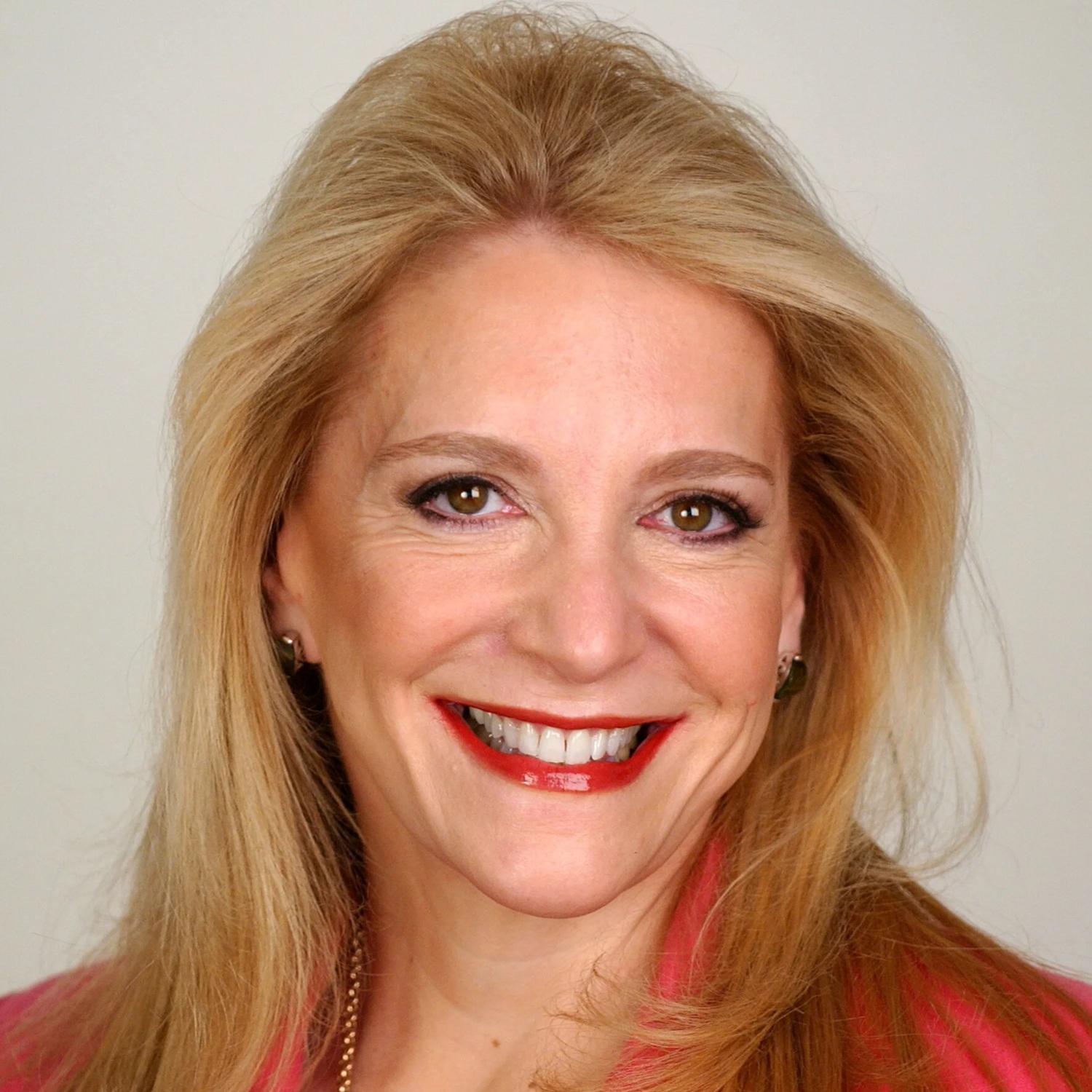Moms: Make Your Home Work Like Work
Women have taken the workplace by storm, but at home they often get stuck in the same old rut of yesteryear. The answer to a happy home life could lie in the management skills that bring them success at work.


The big news in the workplace over the past couple of decades has been the emergence of women as a significant force. We’ve gotten the opportunity to show what we can do, and we’ve done it. We’ve made the workplace a different place; a better place. We are educated, motivated, street-smart, and we are taking the world by storm.
The “traditional” definition of a family; with Dad working and Mom raising the kids, has also changed. My mother’s generation used Donna Reed as a role model. She was the star of The Donna Reed Show in the ’50s and ’60s, which depicted the ideal middle-class American family. Dad was working and Donna, the mom, was home taking care of the happy kids and vacuuming and ironing while wearing heals and pearls.
Move over Donna. The trends show that the two-parent family is on the decline. Pew Research Center has found that 40% of mothers are not married. (By-the-way, grandparents are playing a more significant role in helping to raise their grandchildren, too.) Seventy-one percent of women with kids work. What concerns me is that women have been incredibly successful at work, but somehow, we still face challenges managing our households.
From just $107.88 $24.99 for Kiplinger Personal Finance
Become a smarter, better informed investor. Subscribe from just $107.88 $24.99, plus get up to 4 Special Issues

Sign up for Kiplinger’s Free Newsletters
Profit and prosper with the best of expert advice on investing, taxes, retirement, personal finance and more - straight to your e-mail.
Profit and prosper with the best of expert advice - straight to your e-mail.
Process vs. Project
Here’s another big change in the workplace over the past couple of decades. Modern management strategy has moved from a process-oriented to project-oriented. Work used to be built around a process. Big manufacturing companies make the same thing — cars, steel girders, stuffed panda bears — and people, in one way or another, were plugged into that process. They did the same job day after day.
At home, it meant you lived in the same house, in the same neighborhood, and with the same neighbors. It meant you didn’t get divorced. Well, those days are gone. My own work life has bounced me around like a pinball, and I’m now the norm.
The rest of our lives follow the same checkered pattern as our careers. We move around, we work remotely, we get divorced, we partner, we have kids with no partner, we often re-partner, we create stepfamilies, and all of these situations come with their own challenges.
Work works for us. But somehow when we get home, the family is sitting in front of one screen or another, the meatloaf (which you made the night before and left in the fridge) did not make into the oven, and one of your kids announces that he will not only need new sneakers for tomorrow’s soccer game, but that he has invited the team over for a BBQ afterward. These surprises and lack of organization would not happen at the office, but somehow, they are the norm at home.
Too Many Hats for Mom
For all of our skill and ambition, it still seems that many Millennial women find themselves mired in the same routine that their mothers and grandmothers established. Too many of them will not have changed the way they manage their households, and too many of them will continue to see an increasing divergence between their sense of accomplishment in the workplace and the same sense at home. Donna Reed can’t be your role model.
It doesn’t have to be that way. A generation of women conquered the world of business in spite of having a small number of role models. We did it with courage and perseverance, and we have become the mentors and role models for the younger women who have followed. But who are Millennials to look to for our role models at home?
They don’t have to look any farther than themselves in their own business lives.
Today, business strategy is centered on goals rather than routines. Here is how it works. Once you’ve identified a goal, you then create a project to meet that goal. That means figuring out a strategy. You might need some experts for the team who aren’t from your company, so you go out and bring them in for this project — you outsource.
Then, when the project is finished, you critique it, you improve and hone the rough edges, and you go on to something new — new projects, new teams, new strategies, all connected to an overall master plan for the organization, but each one with its own challenges and rewards.
Why do we get bogged down at home, when we’re so good in the workplace? Why does it all seem so…so routine? Maybe it’s because we’ve bought into a lot of myths about home. For instance:
You Can’t Fire Your Family
You can’t, of course, albeit, you can divorce your partner. So what does that mean? That you’re locked into a rut, an endless process? It shouldn’t. At home, you handle more personnel changes than the talent director of a Fortune 500 company. Last year, your employee pool included a stubborn 2-year-old; this year, they have been replaced by an energetic and inquiring 3-year-old. That sulky 16-year-old you were closer to locking out of the house than firing seems to have disappeared, and suddenly your team has been augmented by an intelligent, responsible 17-year-old, and you realize it’ll break your heart when your teen leaves the firm next year to head for college.
We hear a lot about all the different hats women wear, all the different job descriptions we have at home: accountant, buildings and grounds chief, chauffer, cleaning person, comptroller, IT specialist, day care worker, fashion consultant, guidance counselor, judge, veterinarian, health care provider … I can go on. But it all seems a little condescending, isn’t it? We don’t need to invent all those titles to make us understand that being a mom is a varied, challenging job.
Besides, as CEO of the household, it’s our natural responsibility to make sure that everything gets done, either by delegating or by doing it ourselves. It’s not making up a bunch of fake job descriptions that will make the difference in building our self-esteem, in giving us a sense of purpose, in creating a work environment at home that will be just as fulfilling as our work environment. It’s understanding the nature of work and the nature of management and learning how to identify, plan, prioritize and manage projects at home the way we do at work.
Become, Mom, Inc.
The bottom line? Set goals as a family, articulate them, delegate and outsource. You do it at work. Why not do it at home? You want to try to be there for the quality time, and you know what that is. Dishes? Ironing? Laundry? Schlepping the dog to the vet? Not so much. Make sure you create “To Do” lists of projects, frankly the way you do at work. Stipulate who does the job and the time frame … and hold your loved ones accountable.
Cold and heartless? Nope. It will cut down on the angst for everyone … and keep you from pulling your hair out every time you come home from work. Give it a try.
Profit and prosper with the best of Kiplinger's advice on investing, taxes, retirement, personal finance and much more. Delivered daily. Enter your email in the box and click Sign Me Up.

Neale Godfrey is a New York Times No. 1 bestselling author of 27 books that empower families (and their kids and grandkids) to take charge of their financial lives. Godfrey started her journey with The Chase Manhattan Bank, joining as one of the first female executives, and later became president of The First Women's Bank and founder of The First Children's Bank. Neale pioneered the topic of "kids and money," which took off after her 13 appearances on The Oprah Winfrey Show.
-
 Fed's Rate Cuts Could Have Impacts You Might Not Anticipate
Fed's Rate Cuts Could Have Impacts You Might Not AnticipateUnderstanding how lower interest rates could impact your wallet can help you determine the right financial moves to make.
-
 Past Performance Is Not Indicative of Your Adviser's Expertise
Past Performance Is Not Indicative of Your Adviser's ExpertiseMany people find a financial adviser by searching online or asking for referrals from friends or family. This can actually end up costing you big-time.
-
 I'm want to give my 3 grandkids $5K each for Christmas.
I'm want to give my 3 grandkids $5K each for Christmas.You're comfortably retired and want to give your grandkids a big Christmas check, but their parents are worried they might spend it all. We ask the pros for help.
-
 I'm a Financial Adviser: The Fed's Rate Cuts Could Have Impacts You Might Not Anticipate
I'm a Financial Adviser: The Fed's Rate Cuts Could Have Impacts You Might Not AnticipateUnderstanding how lower interest rates could impact your wallet can help you determine the right financial moves to make.
-
 Past Performance Is Not Indicative of Your Financial Adviser's Expertise
Past Performance Is Not Indicative of Your Financial Adviser's ExpertiseMany people find a financial adviser by searching online or asking for referrals from friends or family. This can actually end up costing you big-time.
-
 I'm a Financial Planner: If You're Not Doing Roth Conversions, You Need to Read This
I'm a Financial Planner: If You're Not Doing Roth Conversions, You Need to Read ThisRoth conversions and other Roth strategies can be complex, but don't dismiss these tax planning tools outright. They could really work for you and your heirs.
-
 Could Traditional Retirement Expectations Be Killing Us? A Retirement Psychologist Makes the Case
Could Traditional Retirement Expectations Be Killing Us? A Retirement Psychologist Makes the CaseA retirement psychologist makes the case: A fulfilling retirement begins with a blueprint for living, rather than simply the accumulation of a large nest egg.
-
 I'm a Financial Adviser: This Is How You Can Adapt to Social Security Uncertainty
I'm a Financial Adviser: This Is How You Can Adapt to Social Security UncertaintyRather than letting the unknowns make you anxious, focus on building a flexible income strategy that can adapt to possible future Social Security changes.
-
 I'm a Financial Planner for Millionaires: Here's How to Give Your Kids Cash Gifts Without Triggering IRS Paperwork
I'm a Financial Planner for Millionaires: Here's How to Give Your Kids Cash Gifts Without Triggering IRS PaperworkMost people can gift large sums without paying tax or filing a return, especially by structuring gifts across two tax years or splitting gifts with a spouse.
-
 'Boomer Candy' Investments Might Seem Sweet, But They Can Have a Sour Aftertaste
'Boomer Candy' Investments Might Seem Sweet, But They Can Have a Sour AftertasteProducts such as index annuities, structured notes and buffered ETFs might seem appealing, but sometimes they can rob you of flexibility and trap your capital.
-
 Quick Question: Are You Planning for a 20-Year Retirement or a 30-Year Retirement?
Quick Question: Are You Planning for a 20-Year Retirement or a 30-Year Retirement?You probably should be planning for a much longer retirement than you are. To avoid running out of retirement savings, you really need to make a plan.